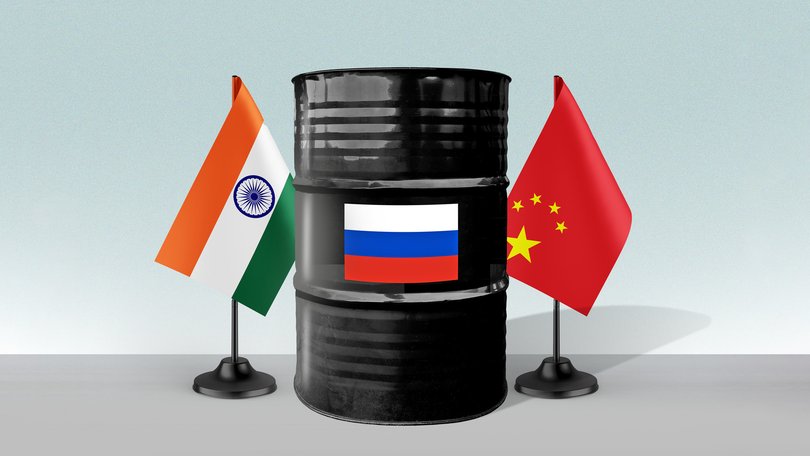India oil squeeze: If America goes after nation’s crude trade, China will be the beneficiary

When western countries began boycotting Russian oil in 2022, India saw an opportunity. Some 2.6m barrels a day (b/d) of crude once destined for Europe were available — at a sweet discount.
India, which bought next to no oil from Russia in 2021, pounced. It has remained Russia’s biggest customer ever since. Today it imports nearly 2 million b/d of Russian “sour”, heavy crude, representing 35-40 per cent of its crude imports.
The supply reduces India’s import bill at a time when the world’s fastest-growing big economy burns ever more petroleum. Local refiners make a killing by processing the stuff into fuels that they then export at full cost.
Sign up to The Nightly's newsletters.
Get the first look at the digital newspaper, curated daily stories and breaking headlines delivered to your inbox.
By continuing you agree to our Terms and Privacy Policy.For three years Ukraine’s allies did not object, and the strategy looked savvy. Now it is in jeopardy. ‘
Irked that Vladimir Putin is making no effort to end his campaign in Ukraine, on August 6 President Donald Trump slapped an extra 25 per cent tariff on India, which he accuses of funding Russia’s “war machine”.
A bill vowing levies of up to 500 per cent on countries that buy Russian oil is making its way through Congress. Meanwhile, the European Union’s 18th package of sanctions will ban refined products made from Russian crude in January.
The tariffs will hurt but the bans lack bite. Indian refineries — other than those backed by Rosneft, a Russian oil giant — source most crude from outside Russia; they can argue their products are not made from Russian stuff even if there is some in the blend. That makes the EU ban hard to enforce.
Mr Trump’s hope is to bring down Russia’s oil revenues in order to force Mr Putin to halt his offensive. Preventing Russian oil from reaching foreign markets, however, could push global prices up, which would be politically uncomfortable for America’s president.
All this might explain why the market remains calm.
There is still potential for a storm. Unlike China, which imports 2m b/d from Russia, India does not have a history of defying American sanctions. When Uncle Sam pledged to penalise anyone buying Iranian oil during Mr Trump’s first term, India swiftly complied.
This time the White House is “serious about pressuring India to go to zero”, says a source familiar with its thinking.
Placid markets may embolden Mr Trump. He could supplement his tariffs with threats that any bank, port or firm facilitating Russian sales will be cut off from American finance.
What if he did? First, India would race to find new supplies. Its refiners have already reduced Russian orders by 40-50 per cent, estimates a trader.
In theory, Middle Eastern countries, which have 3.5m b/d in spare capacity, could provide additional help, along with producers from Africa and elsewhere.
In practice, a lot of Gulf supply is already committed to East Asia through long-term contracts, and much is a lighter type than the “Urals” for which Indian refiners would be looking.
Russia, meanwhile, would struggle for buyers. Chinese refiners could absorb more oil, and the country’s leaders have shown they can retaliate successfully against Mr Trump’s tariffs, but they do not want to end up reliant on any single supplier.
Such analysis dictates that, were America to insist on immediate compliance, global oil prices would jump, perhaps to over $US80 ($123) a barrel.
Mr Trump could not countenance that for long. Very soon he might introduce waivers phasing in the restrictions over six months, allowing markets to adjust — a repeat of 2018-19, when soaring prices in the wake of Mr Trump’s sanctions against Iran forced America’s president to soften his approach.
An oil glut is expected early next year, which might accommodate tough-but-phased-in Russian sanctions.
Given enough time, India would probably manage to replace most of its current Russian supply, albeit at a higher cost (Urals crude currently trades at a $US5-10 discount to other comparable grades).
The margins of Indian refiners would be crushed. As they retreated from the market, the winners would be their Chinese rivals, which have been restocking fast in recent months, giving them plenty of firepower.
Being less exposed to American sanctions, they would also continue to buy Russian crude — at a growing discount.
